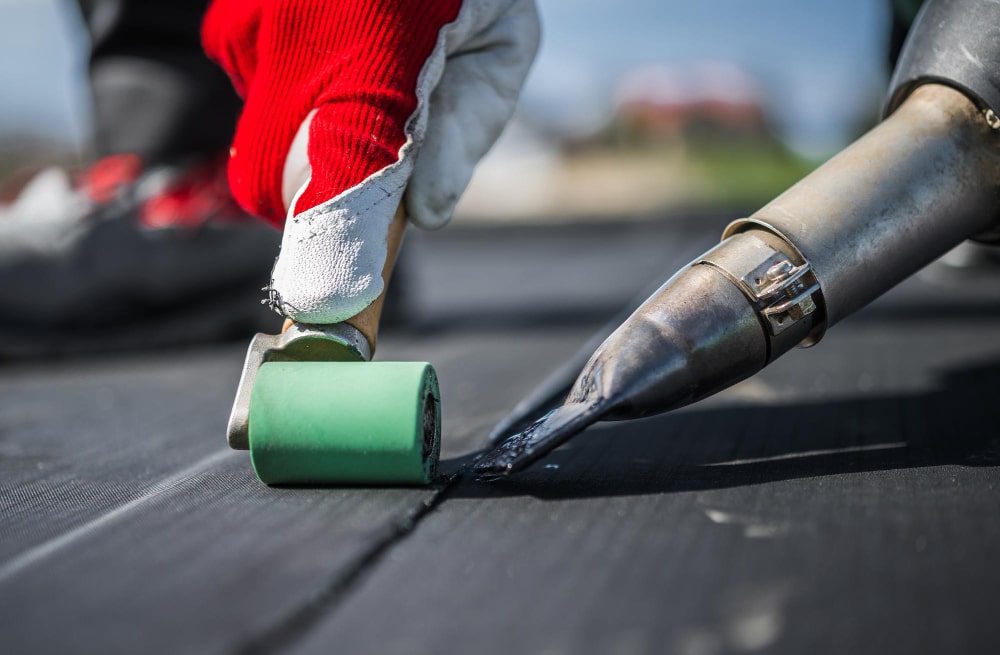Investing in the right roof coating is crucial for protecting your home and extending the lifespan of your roofing materials. However, with various coating options available and each roofing material having its unique characteristics, choosing the appropriate coating can be a daunting task. This comprehensive guide breaks down the factors to consider when selecting a roof coating tailored to your specific roofing material.
Understanding Roofing Materials
Asphalt Shingles
- Compatibility: Ensure that the chosen coating is compatible with asphalt shingles. Some coatings may work well with asphalt, offering enhanced UV resistance and weatherproofing.
- Reflectivity: Reflective coatings can be beneficial for asphalt shingle roofs in hot climates, reducing heat absorption and cooling costs.
- Color Options: Consider the color options available to complement or enhance the aesthetics of your home.
Metal Roofing
- Corrosion Resistance: Metal roofs are susceptible to corrosion over time. Opt for coatings with strong corrosion-resistant properties to protect the metal surface.
- Thermal Reflectivity: Reflective coatings can help metal roofs reflect sunlight, preventing excessive heat absorption and enhancing energy efficiency.
- Adhesion: Ensure the coating adheres well to metal surfaces, providing a durable and long-lasting protective layer.
Tile Roofs
- Flexibility: Tile roofs often have a degree of flexibility. Choose coatings that offer flexibility to accommodate the movement of tiles without cracking or peeling.
- Mold and Mildew Resistance: In humid climates, mold and mildew can be concerns. Look for coatings with mold-resistant properties to prevent the growth of these contaminants.
- Color Preservation: Coatings should preserve the vibrant colors of tile roofs while providing UV protection.
Flat Roofs
- Waterproofing: Flat roofs are prone to water pooling. Prioritize coatings with exceptional waterproofing properties to prevent leaks and water damage.
- Elastomeric Properties: Elastomeric coatings are ideal for flat roofs, offering flexibility to withstand temperature fluctuations and structural movement.
- Reflectivity: Reflective coatings contribute to energy efficiency by reducing heat absorption and lowering cooling costs.
Coating Types and Their Applications
Elastomeric Coatings
- Ideal for: Flat roofs, modified bitumen, metal roofs.
- Benefits: Flexibility, durability, and excellent waterproofing properties.
- Considerations: Ensure compatibility with specific roofing materials and assess the climate conditions for optimal performance.
Silicone Coatings
- Ideal for: Metal roofs, flat roofs, and areas prone to heavy rainfall.
- Benefits: High resistance to UV radiation, water repellency, and durability.
- Considerations: Proper surface preparation is crucial for adhesion, and it may require periodic recoating.
Acrylic Coatings
- Ideal for: Asphalt shingles, metal roofs, and concrete tiles.
- Benefits: Reflectivity, versatility, and ease of application.
- Considerations: May require more frequent recoating, especially in harsh climates.
Polyurethane Coatings
- Ideal for: Metal roofs, SPF roofs, and concrete roofs.
- Benefits: Exceptional durability, insulation properties, and resistance to weathering.
- Considerations: Professional application is recommended for optimal performance.

Coating Application Techniques
Spray Application
- Efficiency: Spray application is efficient for large, flat surfaces, providing uniform coverage.
- Professional Expertise: Professional application is often recommended for spray techniques to ensure even distribution and optimal performance.
Brush/Roller Application
- Detail-Oriented: Brush or roller application allows for precise detailing and is suitable for smaller roof areas.
- DIY Potential: Homeowners may opt for DIY application, provided they follow proper safety measures and application guidelines.
Thickness Considerations
- Manufacturer Recommendations: Follow the manufacturer’s recommendations regarding the required thickness of the coating. Thicker coatings may offer enhanced protection but may also require a professional application for uniformity.
UV-Reflective Technology
- Cool Roof Technology: Some coatings incorporate advanced UV-reflective technology, providing a cool roof effect that reduces energy consumption and enhances indoor comfort.
Self-Cleaning Properties:
- Low Maintenance: Coatings with self-cleaning properties can minimize maintenance efforts by shedding dirt and debris, preserving the coating’s effectiveness over time.
Environmental Sustainability
Environmentally Friendly Options: Coatings made with sustainable and eco-friendly ingredients contribute to a greener roofing solution.
- Recyclability: Consider coatings that are recyclable or made from recycled materials to minimize environmental impact.
- Low VOC Content: Coatings with low volatile organic compound (VOC) content contribute to air quality and minimize the carbon footprint of the coating process.
Advanced Technological Features
- Hot and Dry Climates: Reflective coatings are beneficial to reduce heat absorption.
- Humid Climates: Mold and mildew resistance should be a priority.
- Cold Climates: Insulating properties become crucial to prevent heat loss.
- Check local building codes: Some coatings may be subject to regulations or restrictions.
- Eco-Friendly Options: Consider coatings with low VOC (volatile organic compounds) content for minimal environmental impact.
Professional Installation and Maintenance
- Professional Assessment: Consult with a roofing professional to assess the condition of your roof and determine the most suitable coating.
- Surface Preparation: Proper cleaning and preparation of the roofing surface are essential for coating adhesion.
- Regular Inspections: Schedule periodic inspections by roofing professionals to assess the coating’s condition and address any signs of wear, damage, or deterioration promptly.
- Recoating Intervals: Work with professionals to establish a recoating schedule based on the specific characteristics of your chosen coating and environmental factors.
Conclusion
Choosing the right roof coating involves thoughtful consideration of your specific roofing material, local climate conditions, and environmental factors. By understanding the unique characteristics of your roof and selecting a coating that aligns with those attributes, you can enhance the longevity and performance of your roofing system.
For a comprehensive assessment and professional guidance, always consult with experienced roofing professionals who can provide tailored recommendations based on your specific needs and preferences. With the right coating in place, your roof will not only withstand the elements but also contribute to a more energy-efficient and resilient home.
Perimeter Roofing offers expert roof coating services in Athens designed to extend the life of your roof and enhance its protective properties. With a commitment to quality craftsmanship, they apply advanced coatings that provide durable protection against weathering, UV rays, and potential damage, ensuring your roof remains resilient for years to come

